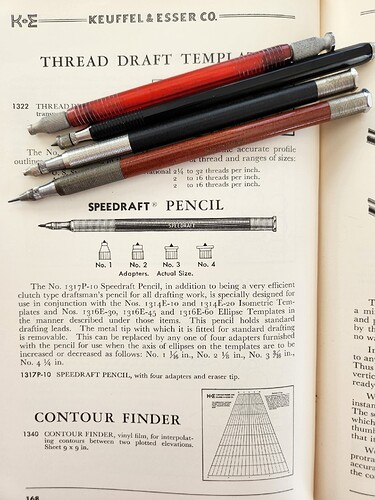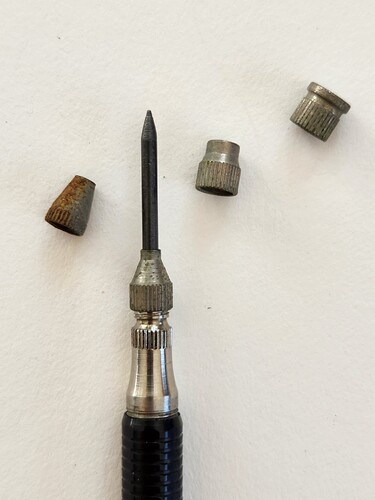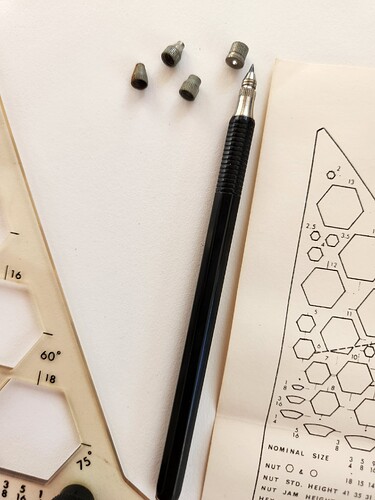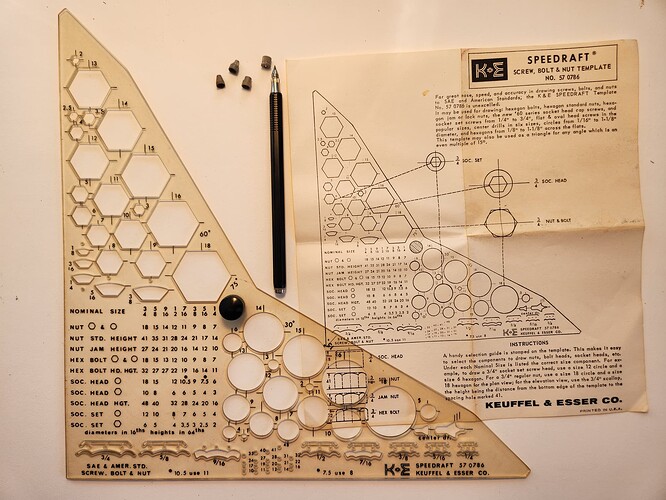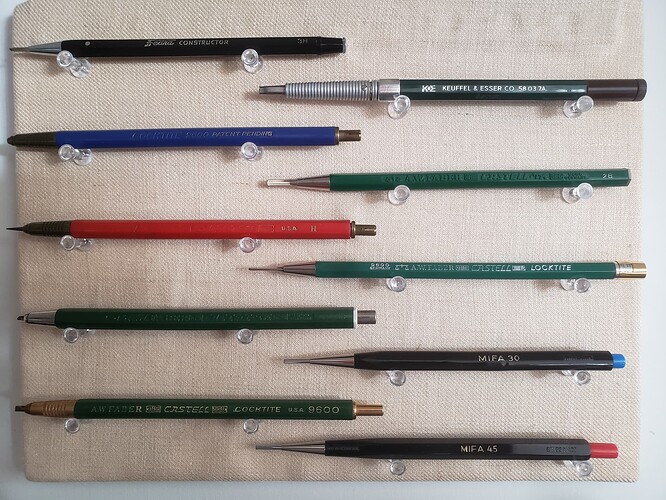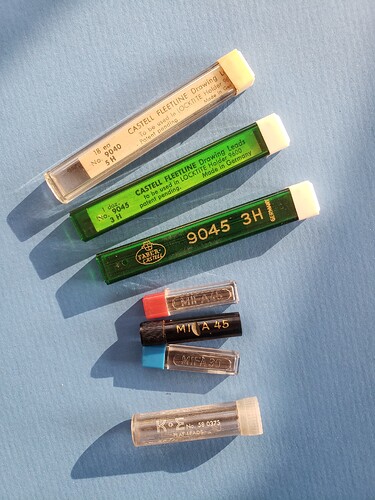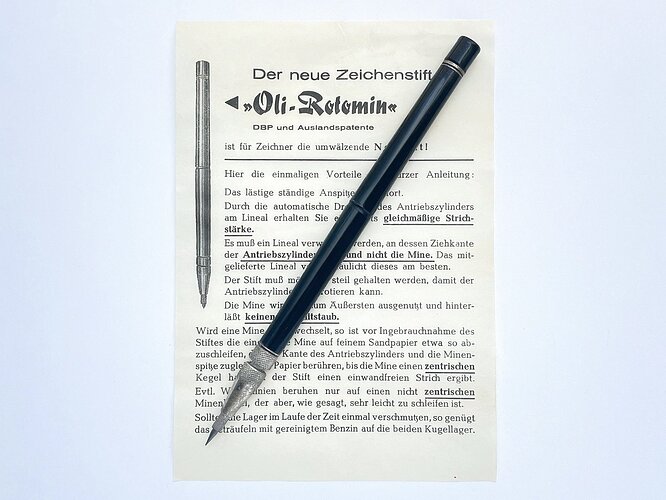Variable thickness still sounds awesome to me. Indeed, this makes me think that the modified spring-clutch FC 9400 or 9500 “FL” (for Flach) was born precisely to replace this contraption, while still guaranteeing interoperability with all possible thicknesses. Nice bit of history.
Great question with, so far, an unknown finite answer. If I had to guess, I would pick ALTENEDER. They were still in business (in the USA) when these (briefly) came out , circa 1954. They were certainly capable of machining them, as they were very good at tool making, including the 500 and 501 pencils (sorta Grails in themselves) with a very similar form factor ( love the term) to the grip end of at least two of the SD models . The Speedraft was patented in 1949 by some Hoosier ( fellow traveler, of sorts) who sold the rights to K+E. They are really of little practical use as they are a pain to point and their claim to fame ( making perfectly dimensioned circles or other closed shapes by using them and their, ahem, “special” templates) is just not that needed that often. And, if you can draft, they just clutter your desk…
In any case, more data ( the red plastic fella is a dual point…or dually pointless…):
AWF’s first “flat lead” model was TK 9600 in the mid-late '50’s. The patent date (patent sold to AWF), was 1955. Yes, it was just a repurposed tk9400 with a relatively sketchy method of attaching the “leaves” that gripped the flat lead to the collet…most turned in round, 2 mm holders…want one?
The whole genre’s use was for a very old school process called “lofting”, which was making large scale drawing ( originally of ships, them planes, then eBay..) and the use of a round lead for such large scale ( quarter-full..?) would quickly wear out your point, so the flat ones, less snapping them, could provide a consistent, relatively wide/bold line to match the scale of the (often wall-mounted) drawings . Other makers were C’D’A, FEDRA/ALVIN, MIFA/MIRA ( with a DIETZGEN label here and there) and I think TOMBOW… Lead is the issue now, so think small…The CD’A was AWOL at the time of the group shot…
That Speedraft… I have only seen them twice in the wild, and every time the price was way out of my league; I am very happy to see the template they were meant to work with, very interesting shape, and — obviously — very cool knob to handle the whole piece. If only they did the interchangeable heads in stainless steel, to avoid corrosion.
I learnt about the Speedraft while perusing the majestic leadholder-dot-com website, but only as a byproduct of another spectacular German contraption, namely the Oli Rotomin, probably one of the weirdest mechanical pencil around (was it the one you could lubricate with petrol? Or de-grease with petrol? Or something along those lines… too crazy for me to even remember correctly, but Joker-level crazy, i.e. fascinating).
Also, I remember only one listing for an actual Oli Rotomin all these years on the Bay, but then again, the asking price was way too rich for my blood.
And once again, what a display! ![]()
I bought a twistaction 9600 off of Andrey many a moons ago, only to find later a pair of those in the back drawer of a stationery shop here in Trieste, which the owner was very glad to sell me for a few bucks, just to get rid of everything cluttering his space.
The hardest part is, of course, finding that lead: the same shop had a few tubes of HB and 2B flat lead that I took with me, but I haven’t seen any other in a while — save perhaps on your Ebay shop.
I have the model occupying the fourth position from the top in the left column of your display, but in the short space between the button and the end of the engraved pencil model there is a tiny silver-ish imprint of the letters “Fl.” (probably for “Flach”, or “Flachminen”), which makes it one of my most fun piece. I should have a Mifa 30 on its way to me (or was it a Fedra Constructor? I cannot remember exactly), and I praise your two different Locktite variants.
Needles to say, I think the K+E steals the show nonetheless, but I cannot assess how comfortable or easy to use it is.
I’ll seriously think about digging into your spares, but I have to first find the magic formula allowing me to make money appear out of an empty wallet, and then convince myself that getting yet another drafting contraption is a good idea — this last part seems the easiest one, in all fairness. ![]()
Bakelite… Almost raw metal with semi-aggressive knurling… Extra condensed script blackletter typeface on the leaflet… One-of-a-kind attitude… Ball bearings (because who am I, a friggin nephew of a woodcased pencil, or the step-sibling of the era of mechanical marvels?). Out-of-the-box maintenance recommendations[*].
Pure German boldness. Love it!
[*] From Dennis B. Smith’s original website, this comment about the leaflet I found on the Wayback machine (italics added by me):
«I do not spreken zee doytch, but I swear to kittens these instructions recommend gasoline as a lubricant for the bearings.»
